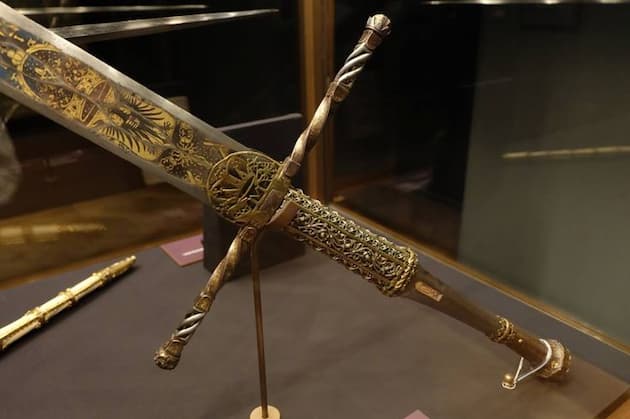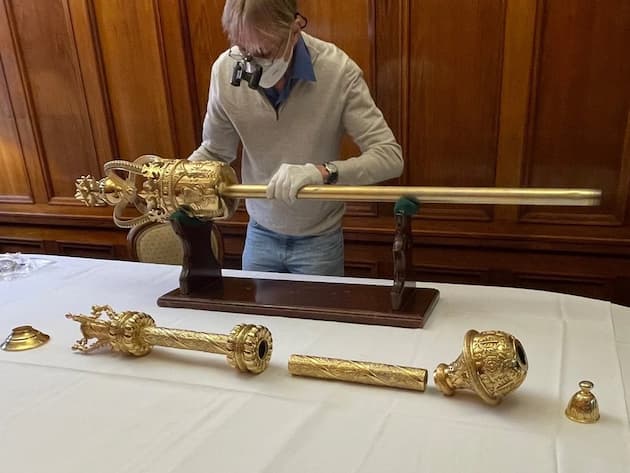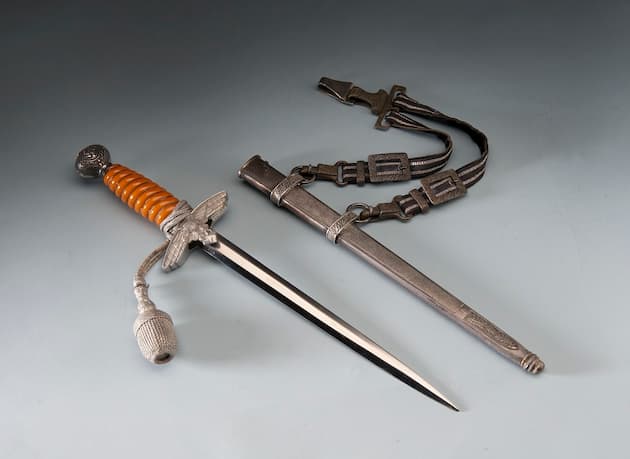Discover 4 Different Types of Ceremonial Weapons and Their Meaning
A ceremonial weapon is an instrument that is used in a ceremony to demonstrate power or authority. They are frequently used in parades and formal events by men and women in uniform. Although they are descended from weapons used in actual battle, they are not typically employed in that capacity. Their form, especially their finishing and decorating, is often designed to demonstrate status and power and to be a sight to behold, rather than to be functional as a weapon.
Frequently, ceremonial weapons are made from precious metals or other materials that render them unsuitable for battle. In the case of ceremonial swords, this may manifest as a lack of balance. Historically, however, a large number of ceremonial weapons were also capable of genuine combat, particularly among the military. The most popular ceremonial weapons besides swords are maces, halberds, and daggers, although in theory practically any weapon can be ceremonial.
Swords

A sword is an edged, bladed weapon designed for cutting and thrusting by hand. Its blade, which is longer than a knife or dagger, can be straight or curved and is affixed to a hilt. The blade of a thrusting sword is typically straighter and has a pointed tip. The blade of a slashing sword is often curved and has a sharpened cutting edge on one or both sides.
Many ceremonial swords have in fact been made for both thrusting and slashing. The specific definition of a sword varies by era and area. Historically, the sword evolved from the dagger during the Bronze Age; the earliest known examples date back to around 1600 B.C. Later Iron Age swords remained rather short and crossguardless.
When sword performance improved in the Late Roman army, the spathe became the progenitor of the European sword of the Middle Ages, first adopted as the sword of the Migration Period and eventually developing into the classical arming sword with crossguard in the High Middle Ages. The origin of the word sword can be traced back to the Old English word sweord or swyrd.
Swordsmanship, or fencing as it is often known today, is the art of using a sword effectively. Early modern western swords were mostly of two types: thrusting swords and sabres. The range of ceremonial swords of the Australian military you can find nowadays also consists of sabres, as well as the well-known Mameluke, Artillery, Infantry, and Windlass swords you can buy along with fancy accessories like scabbards, belts, slings, leather bags, knots, and display stands to proudly showcase them.
In case you don’t feel like buying one in its actual size, you’ve got other options of military sword in the example of Navy, Army, Air Force desk sets displayed on seamless and minimalist acrylic stands you can rely on to decorate your office. Limited editions, miniatures, and fancy letter openers for your important documents are other options of military collectables you can shop from for your ceremonial weapons collection.
Mace

The modern mace is descended from the original weaponized mace. During parliamentary or academic ceremonies, mace-wielding processions are still common. From the late Stone Age, the Bronze Age, and the early Iron Age, ceremonial maces were utilized as symbols of rank and authority throughout the Ancient Near East. The Ancient Egyptian Scorpion Macehead and the Narmer Macehead are among the oldest known ceremonial maceheads; both are intricately etched with regal motifs, although their specific function and symbolism are unknown.
During the Old Babylonian period, “The Figure with Mace,” who wears a regal hat and holds a mace in his left hand, is the most prevalent figure on cylinder seals (a form of seal used to authenticate clay documents) and is widely considered to represent a generic monarch. Assyrian kings are often shown in royal art, such as the Stela of Ashurnasirpal II or the Stela of Shamshi-Adad V, using ceremonial maces as symbols of their power and prestige during religious rites.
Halberd
During the 13th, 14th, 15th, and 16th centuries, the halberd or Swiss voulge became a popular two-handed pole weapon. The halberd is composed of an axe blade with a spike affixed to a long shaft. The standard length of a halberd was between 1.5 and 1.8 metres. The German term for “halberd,” Hellebarde, is cognate with the English word “halberd,” which comes from the Middle High German words halm (handle) and barte (battleaxe) combined to produce helmbarte.
The halberdiers were the soldiers who used the halberd. The name has also been used to describe a weapon from Western Europe’s Early Bronze Age. An early 16th century miniature from the Lucerner Schilling portrays the Battle of Grandson. Swiss troops are pictured with halberds of an older era. The halberd was first referenced (as hallenbarte) in a poem written by the German poet Konrad von Würzburg in the 13th century.
John of Winterthur characterised it as a new Swiss weapon used in the 1315 Battle of Morgarten. The halberd was cheap to construct and extremely adaptable in combat. As it was finally improved with time, its point was honed to be more effective against spears and pikes (and to repel incoming riders), as was the hook opposite the axe head which could be used to draw horsemen to the ground.
Daggers

A dagger is a combat knife having a very sharp point and, typically, two sharp edges, designed or capable of being used as a thrusting or stabbing weapon. Throughout human history, daggers have been employed for close combat, and many societies have decorated their daggers for ceremonial and ritual purposes. The dagger has become an emblem and a symbol due to its unusual form and long history of use.
Modern daggers are designed for close-quarters combat or self-defence, but their historical use in weapon collections gives them a sinister aura. While this is generally true, double-edged swords can serve several purposes depending on the context in which they are used. Daggers have been used to refer to a wide variety of thrusting knives, including those with one cutting edge, like the European rondel dagger, and those with no cutting edge, like the Renaissance stiletto.
But in the last century or so, a dagger has some distinguishing traits, including a short blade with a sharply tapered point, a central spine or fuller, and usually two cutting edges. Typically, daggers will have a full crossguard to prevent the user’s hand from accidentally sliding onto the blade. A fun side note is that in Neolithic times, the earliest daggers were fashioned from flint, ivory, or bone, much different from those today made from metals like steel.